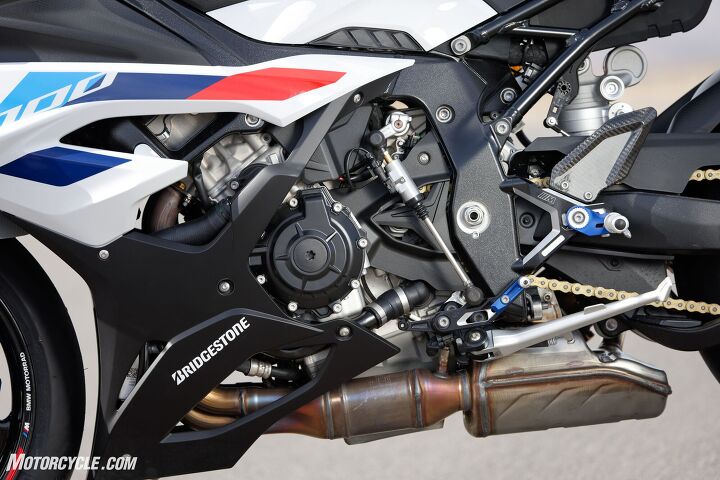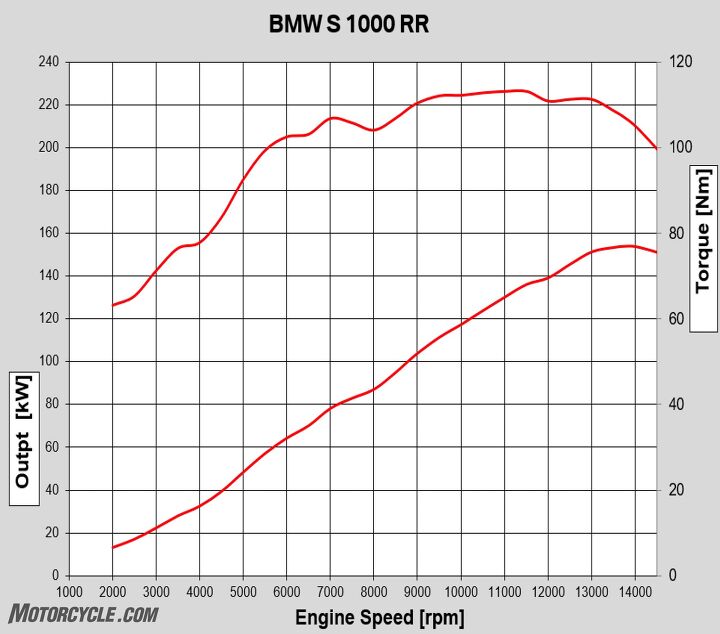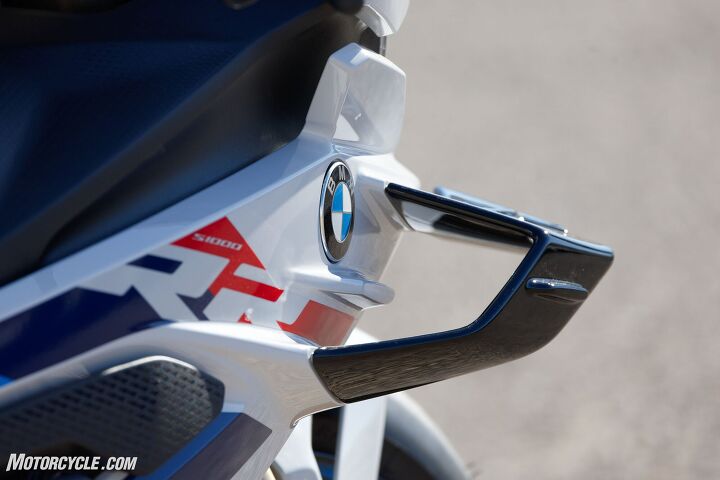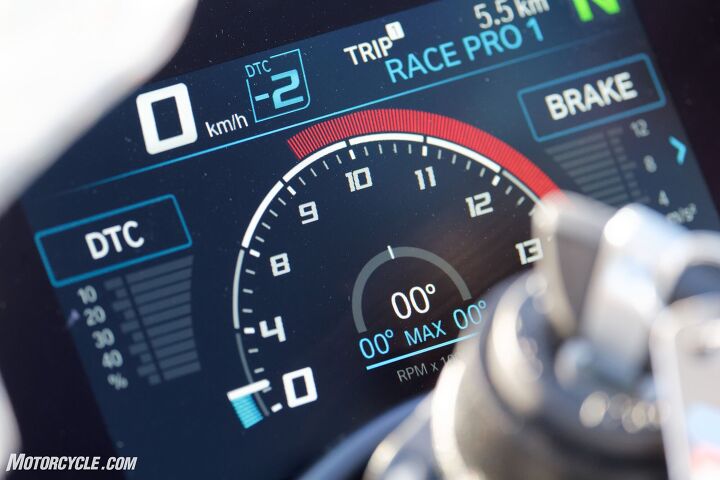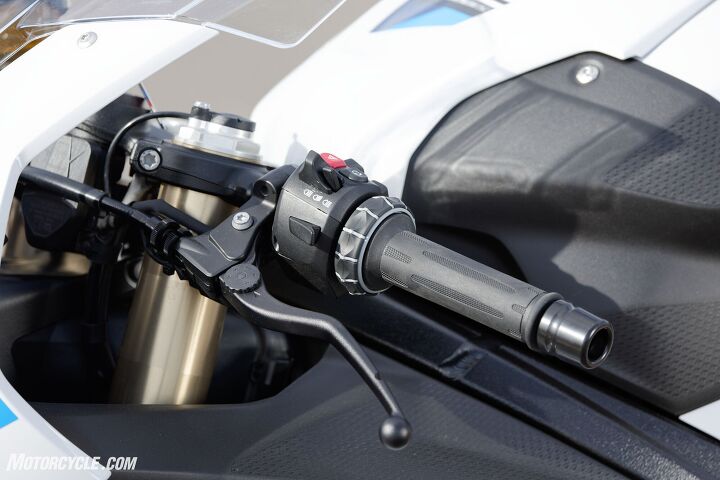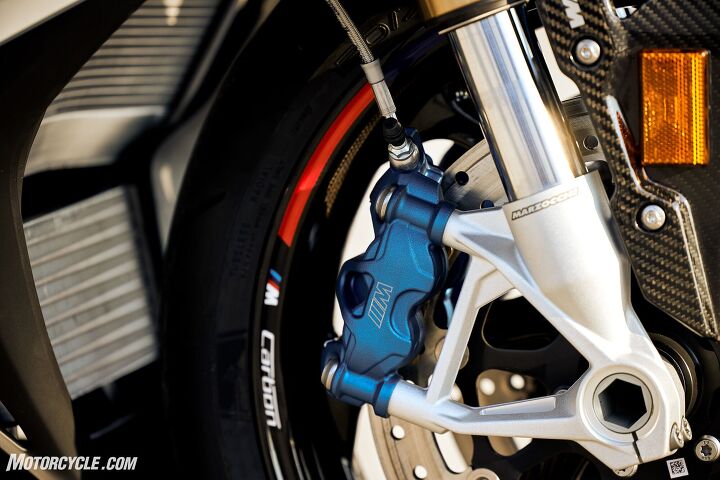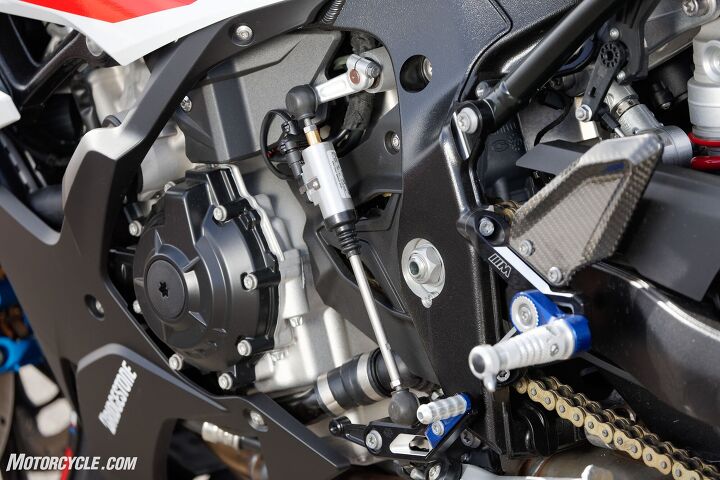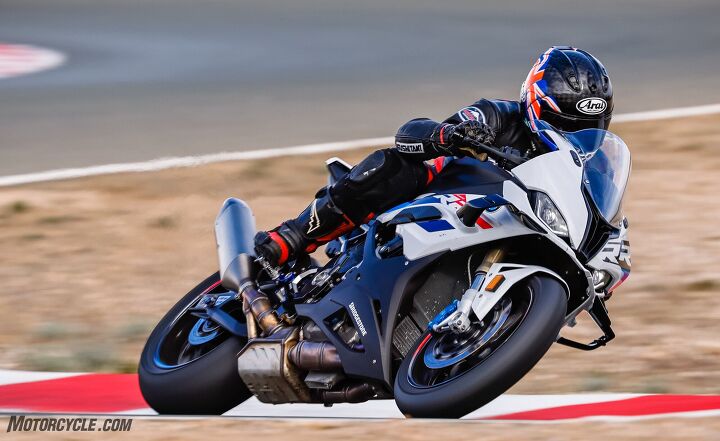Motorsports Racing News & Blog Articles
2023 BMW S1000RR Review – First Ride
It scarcely seems possible that BMW Motorrad’s lineup-leading S1000RR sportbike actually made its official public debut a whole decade and a half ago in April 2008, with deliveries beginning the following year. Even though 15 years is a long time, especially in the Superbike arena, where serious players like BeeEm, as well as Ducati, Aprilia, and the Japanese, don’t stint on investing in fast-moving high-end technical R&D in pursuit of engineering excellence, the German brand’s first-ever customer motorcycle with a transverse-mounted four-cylinder has maintained its leading edge reputation for both mechanical and electronic innovation ever since then, and the newly introduced latest version is no exception.
This is because, for the coming 2023 model year, BMW has essentially uprated its existing volume production version of the bike by transplanting a good chunk of the array of technical upgrades available until now only to around 1,200 well-heeled or well-sponsored users of the M1000RR, the uber-expensive, uber-performing version of BMW’s street-legal superbike that’s been on sale for the past two years, essentially as a homologation special for Superbike racing. As such, it earned its keep by powering Peter Hickman to a trio of record-breaking race wins at the 2022 Isle of Man TT – albeit without breaking his astounding outright single-lap record of 135.452mph set in the 2018 Senior TT on an S1000RR – while also registering hard-fought race wins for Hicky and Danny Buchan in the hot-as-Hades BSB series. However, thus far the BMW has failed to be a true contender for top honors in World Superbike for the past decade, ever since Marco Melandri finished third in the points table on an S1000RR in 2012 – and that’s despite proven WSBK winner Scott Redding joining the factory team last season.
An all-new engine
While BMW’s original game-changing, ultra short-stroke 2009 S1000RR set new standards on debut for series production four-cylinder Superbike technology, in 2019 there was a heavy revamp with less than 5% of the 8,200 components making up the entire motorcycle, including the engine, carried over from before. BMW Motorrad management was looking to significantly improve on the existing bike’s performance, meaning they wanted it to be one second faster on the racetrack, more than 10kg lighter, and easier to control, with improved rideability. Doing this entailed developing an all-new, lighter, more compact and more powerful 999cc engine measuring an unchanged 80 x 49.7 mm, which while 12mm narrower than its predecessor, also weighed 8.8 lbs less. This was thanks partly to a crankshaft 4 lbs lighter than before carrying 4mm shorter and 10% lighter conrods, which together delivered even better pickup throughout the rev range. But the most significant step that’s been carried forward alongside these other features to the 2023 model was the application of BMW’s patented ShiftCam Technology introduced on that year’s R1250GS adventure tourer’s Boxer motor, then transferred to BMW’s four-cylinder range. This combines both variable intake valve timing and differential valve lift, all in the same package, and together with revised cam profiles is responsible for at least 73.8 lb-ft of torque being available between 5,500 rpm and 14,600 rpm, where the short-stroke engine’s unchanged soft-action limiter cuts in. And that 8.8-lb weight saving came despite the 2.2-lb weight penalty entailed in fitting the ShiftCam system.
BMW S1000RR Engine’s Shiftcam Technology ExplainedBMW Motorrad’s ShiftCam Technology owes nothing to the Vanos variable valve timing technology developed 30 years ago for use on BMW cars, nor the Valvetronic variable valve lift system introduced in 2001, both of which were considered too bulky for motorcycle use. Instead, the radical, highly innovative ShiftCam system in the S1000RR engine’s cylinder heads combines both variable valve timing and differential valve lift, all in the same package, as a means of optimizing cam timing and duration for what you’re asking the engine to do. For part-throttle openings, or lower down in the rev range, the cam has a shorter lift and reduced duration, meaning the inlet valves are open less. But ask for more throttle or higher revs and the cam shifts sideways, bringing into play a higher lift, longer duration cam lobe, more suited to outright performance.
.
This is achieved by having the inlet camshaft of each cylinder incorporating two different cam profiles mounted side by side on the same shaft. One of these is a partial-load cam, which has been configured to deliver improved fuel consumption and refinement at part-throttle. The other is a full-load cam designed for enhanced output via more aggressive throttle openings, which delivers longer duration inlet valve openings. By means of an axial shift from side to side of each inlet camshaft, the paired inlet valves on each cylinder are activated via their finger followers by either the partial-load or the full-load cam, depending on engine rpm, gear selected, and throttle load, with that axial shift affected by means of a pin that’s electronically actuated via the ECU, operating the shift gate on the camshaft.
.
This means that as the throttle opens wider via the twistgrip, the electronic actuator lifts a pin to lock into the inlet camshaft gate. The rotation of the camshaft then permits the pin to draw the camshaft sideways, to bring the more aggressive longer duration cam lobes into line with the valves. When the throttle is closed, the camshaft is pulled back across the cylinder head, and onto the less aggressive smaller profile cam employed for normal use. Either way, the change is practically instantaneous, taking just 10 milliseconds to accomplish. That’s less than the blink of an eye.
.
Additionally, the variable configuration of the cam geometry also enables a variation in the inlet valves’ stroke. While the full-load cam provides maximum valve stroke, the partial-load cam delivers reduced stroke. There is also a phased differential opening between the left and right-hand inlet valves in each cylinder, in terms of both stroke and angular position. This phased shift means that the two inlet valves are opened a differential amount in terms of lift – i.e. one more than the other – and on a time-staggered basis. This helps create additional swirl for the incoming charge of air and fuel, and thus greater agitation of the mixture as it flows into the combustion chamber. This results in both improved combustion – so, a bigger bang – as well as more complete burning of the fuel, thus ensuring reduced emissions and a claimed up to 4% lower fuel consumption. And the smoother delivery and broader spread of torque also reduces the propensity of the bike to pull wheelies, as there isn’t such a fierce spike in the torque delivery. But the biggest advantage of the ShiftCam Technology in dynamic terms is the noticeable increase in ridability in both normal road conditions, and in high performance use on the racetrack, thanks to the significantly enhanced midrange power, and the wide spread of torque it delivers.
Now, in pursuit of greater performance at higher revs, BMW has transposed the M1000RR’s airbox and cylinder head to the volume production Euro 5-compliant 2023 S1000RR, though its new intake porting is cast in here rather than milled out, as on the M RR. As before, the uprated S RR engine is fitted with a variable-length intake system whereby the height of the inlet trumpets atop the 48mm throttle bodies that are now shorter overall for 2023, is further reduced via an electric servomotor mounted on the airbox operating at 11,900 rpm (a hefty 2,900 revs higher than before) to enhance top end performance in conjunction with the ShiftCam Technology system. This has allowed BMW to raise power by 3bhp to 207bhp at 13,750 rpm, 250 revs higher than previously, with peak torque unchanged at 83 lb-ft, but delivered 500 rpm higher at 11,000 rpm.
Moreover, the throttle linkage operating the four throttle butterflies is split into two, with the two left-hand throttle bodies operated separately than the two right-hand ones. This has allowed BMW race teams to programme the two pairs to work separately at lower rpm to give the same benefits as a twin-cylinder motor in terms of traction and drive exiting a turn, before all four resume working in unison at higher revs. This feature resulted from BMW deciding not to produce a big-bang Yamaha R1-type crossplane-crank engine, but instead to employ its decade-long experience of a more traditional 180° screamer motor in building a better such design. BMW engineers admit they did consider a big-bang design at the very outset of the development programme for the 2019 revamp, and also briefly considered building a V4. But they decided against both of these early on, not only because they didn’t want to be seen to copy anyone else, but also because they had so much experience especially from Superbike and Endurance racing in developing the more traditional-type four-cylinder in-line engine, so they decided to concentrate on building an even better one – as in, play to your strengths. Look how that benefitted Kawasaki and Jonathan Rea….
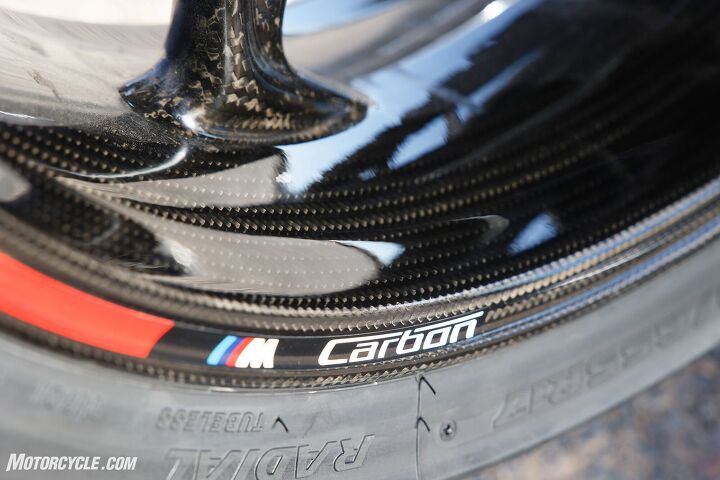
BMW’s choice to mount accessory carbo-fiber wheels makes it almost impossible to judge how the bike will perform in stock trim because of the quicker steering and better acceleration allowed by the lower rotational mass.
To complement the extra performance higher up the rev scale, the 2023 S1000RR’s overall gearing has been lowered via a 1T bigger rear sprocket, up from 45T to 46T, so you can dial up the revs faster to access that extra power and the meaty spread of torque. That’s all in pursuit of improved rear end grip and enhanced acceleration, albeit at the cost of a slight decrease in homologated (as in, proven) top speed from 190mph to 188mph. Pull your elbows in and you might find the missing mph! To find out what the result was like to ride on track (sadly, there was no opportunity to do so on the street), I went to the BMW press launch at the 2.67mi Almeria circuit in the southeast corner of Spain, complete with its six-tenths of a mile-long back straight and many tricky turns, some with blind apexes. It was ideal for assessing the street-legal BMW. An important note: each test bike was fitted for the launch with optional carbon wheels [a move which radically alters the bike’s handling – EB] from BMW’s aftermarket catalog, shod with sticky Bridgestone dual compound V02 slicks – the rear a narrower 190/55-17 fitment, rather than the 200-section tires on its Italian rivals.
Functional winglets and a flexible chassis
Also derived from the M-series model is the most obvious difference between new and old in the form of the winglets fitted to the 2023 S1000RR’s subtly restyled bodywork. These aren’t just a styling feature; they are claimed to generate up to 16.8 lbs of downforce at 124mph, rising to 37.7 lbs at 186mph. Their appearance may not be to everyone’s taste on such a slinky-looking device as the ’23 S1000RR, but function has it over form every time in this category of motorcycle. They help reduce wheelies without TC being called upon to do so at the expense of reduced torque and power being transmitted to the rear tire. This means improved acceleration, as well as enhanced front tire grip during braking and cornering. Yes the winglets inevitably add drag, the engine’s extra power largely compensates for that. In addition, BMW has helped counter that drag further via a taller, reshaped windshield that helps improve the flow around the rider’s helmet, and there’s a further aerodynamic improvement achieved by partitioning off the lower triple clamp. There’s a choice of three colors for the bodywork – Black metallic, Red non-metallic and BMW’s trademark White racing livery, with the price the same for all three variants at $17,895, compared to $32,495 in 2022 for the M1000RR. What a bargain! Well, until you start ticking boxes on the extensive list of accessories…
That shark-eyed bodywork with redesigned front and rear sections and a shorter number plate holder envelops a revamped version of the RR’s existing aluminum bridge frame. This comprises a welded-up assembly of four separate gravity die-cast elements embracing the engine – still inclined forward by 32° as before – acting as a fully load-bearing chassis component. However, with the aim of optimizing lateral flex in order to provide greater feedback to the rider of what the wheels are doing, this so-called ‘Flex Frame’ has now been given several cutouts in its flanks to promote said flex. This is a strategy dating back to the works Honda RVF750 Suzuka 8-Hours Endurance racers of the 1980s, which first manifested itself outside of Japan in the factory-supported Rumi Honda RC30 raced in the 1990 World Superbike series by Baldassarre Monti. This was the first aluminum beam-framed Superbike to explore this technique of promoting flex in pursuit of the same rider-friendly ‘talkback’ which Ducati V-twin riders have always enjoyed (until recently!) with their tubular steel chassis, and the 2023 S1000RR is the latest such bike to benefit from this strategy.
Additionally, the new RR chassis has slightly less aggressive steering geometry derived from the M RR, with the steering head angle for the fully-adjustable 45mm closed-cartridge Marzocchi fork delivering 4.7 in. of wheel travel kicked out half a degree to 23.6° and the offset reduced by 3mm, resulting in trail increasing from 3.7 in. to 3.9 in. At the same time, the wheelbase has been extended to 57.4 in. (from 56.7 in”, so three-quarters of an inch longer) via an all-new gravity diecast one-piece twin-sided swingarm with underslung sections, with the rear wheel made easier to install and remove for track days or races, thanks to the brake pads and brake anchor plate now being chamfered, plus the revised mounting of the right side rear axle bushes, to prevent loss. Another transplant from the M RR is the adjustability of the swingarm pivot point (range unknown) and the height of the rear Marzocchi shock, again ten-click fully adjustable and giving 4.6 in. of rear axle travel. My test bike came fitted with the optional DDC (Dynamic Damping Control) package, which delivers semi-active electronic damping adjustment front and rear, whose settings are altered to suit the selected riding mode.
Electronics include Brake Slide Assist
The ’23 S1000RR has an evolved electronics package with a RBW (Ride by Wire) throttle offering five different riding modes – Rain, Road, Dynamic and Race, plus Race Pro which also gets three levels of throttle response and engine braking options. These, combined with a triple-axis, six-direction Continental IMU, control the array of rider aids, most of them switchable: Cornering ABS Pro, multi-stage DTC, engine braking adjustment, anti-wheelie, hill start assistance, launch control, cruise control, a lap timer, three-stage heated grips, a pit lane speed limiter, engine braking torque control (MSR) and the Dynamic Brake Control (DBC), which BMW says ‘offers additional assistance during emergency braking’ – i.e. stops stoppies!
In addition, BMW engineers are proud of their Brake Slide Assist (BSA) system that, should you be sufficiently brave as well as expert enough to do so, lets you back into a turn by limiting rear brake pressure and rear wheel spin to achieve a controlled, predetermined drift angle, before the lean-sensitive ABS cuts in. This new system is based on steering angle sensors mounted on the bike for the first time, which let you set a specific drift angle for so-called braking drifts while sliding into turns at a maintained speed. When the preset steering angle is reached, TC intervenes, reduces spin, and stabilizes the bike.
Also included are a lightweight lithium battery, USB charging port, a very neat GoPro holder, and a new wiring loom to make removing the rear lights and number plate holder for track days easier. Claimed kerb weight for the new bike remains unchanged at 434 lbs with all liquids, including a full 4.4-gallon fuel tank (so around 392 lbs dry) for the standard bike, 431 with the optional Race Package which features forged aluminum wheels instead of the stock cast ones, and 426 lbs with the M Package option, which includes the carbon wheels and seat fitted to the test bike. This also carried the Performance Package consisting of an Akrapovič slip-on exhaust and the Endurance chain developed by BMW’s factory World Endurance team. Stopping the overall result are the same twin 320mm Brembo front discs as before, but these are now gripped by new Nissin monoblock four-piston calipers, replacing the Hayes stoppers introduced in 2019 as a startling substitution for the Brembos used previously. There’s a 220mm rear disc with twin-pot caliper, and Continental’s cornering ABS is retained, with requisite upgrades.
Track performance
Having digested this list of upgrades to what was already a pretty dam’ good motorcycle, I couldn’t wait to get out on track at Almeria to find out if, in trying to make it even better, BMW had chucked the baby out with the bathwater. Hopping aboard allayed one fear – this is the same two-wheeled conundrum as before, in the shape of a bike that, despite the longer wheelbase and extra bits of bodywork, feels about the same size as a 600 Supersport, while delivering the insanely fast performance of a TT-winning one-liter Superbike. The frame is surprisingly narrow, especially at the stepover point behind the fuel tank, despite the motor’s in-line four configuration, BMW says it’s only 20mm wider than a V4 engined bike of equivalent capacity in that area. This makes it easier for you to grasp the fuel tank made from three welded-together aluminum sections with your knees, but also gives you room to move about the bike, as necessary.
The clip-on ‘bars are spread further out than on the previous bike, adding to the same improbable sense of spaciousness for what in the metal is a much smaller bike than it seems to be in photos, and the taller, reshaped new screen helps make you feel like you’re sitting within the BMW rather than atop it. It also gives excellent protection for a 5’10” rider down Almeria’s main straight, with the super-legible 6½in. TFT dash’s digital speedo reading just upwards of 170 mph. Yes, I know – I should have pulled those elbows in better. But there doesn’t seem to be as much weight on your wrists and shoulders as I remember from the old bike, so this new one will presumably be an even better ride for the longer haul. Plus the extra flex which BMW engineers have dialed into the new frame design is presumably one reason it feels more responsive, and gives improved feedback from the front end, especially when trying to keep up turn speed in the tricky triple-apex right-hander at the back of the Almeria track.
There, the first part of the turn taken as you crest a small hill is blind, so you have to be super-precise in choosing your entry point, and although I’ve been riding at Almeria ever since it opened in the late-‘90s, and have tested everything from factory 500GP and World Superbike racers there down to (in capacity, not as a challenge!) Jack Miller’s Moto3 KTM, it still always takes me time to get dialed in again because of the hidden apexes, and this test was no exception. But the BMW was a perfect partner for doing this, because despite having that huge top end performance and thrilling acceleration, it’s also amazingly forgiving when your memory betrays you, or you get seduced into thinking you’ve got this circuit licked by having done the last series of corners pretty well. This is a bike that is easier than ever to go fast on – but will also pardon your inevitable overconfidence mistakes in a way that’s almost uncanny.
So, when you get over-ambitious with your turn speed and have to back off the throttle entering a bend at the cost of missing your apex and drifting wide – you think – the BMW’s electronics take over and close the corner entry for you, so that you’re back where you ought to have been in the first place, but for your excess of ambition. Like I said – uncanny. Same thing braking from somewhere around 170 mph at the end of the half-mile-long main straight, into a second-gear 90° right-hander. The total stability delivered by the engine braking program as you max out your late-braking skills not only makes it seem each lap as if you could have hit that fabulously effective Nissin/Brembo brake cocktail just a little bit later – but then when you do inevitably overdo things and go past your turn-in point while trying unsuccessfully to emulate Toprak Razgatliogu, the BMW’s electronic program to control stoppies kicks in as it lets you recover, stop, turn in, and proceed as normal, having lost barely any time at all. That’s uncanny – again.
It seems completely improbable to say this of a 200bhp-plus motorcycle, but the overwhelming impression you get from riding this new BMW is how easy it is to do so in something approaching anger. The ShiftCam function, the sticky dual-compound Bridgestone rear slick, the lean-sensitive Continental TC and that shorter overall gearing combine with the engine’s accessible power delivery even in Race Pro mode to deliver truly thrilling acceleration when you wind the throttle wide open as you click through the gears on the faultless wide-open two-way quickshifter – but without your having to even graze the rear brake lever with your right toe to strangle a time-wasting wheelie at birth: the BMW’s thought ahead and done it for you.
Likewise the improbably delicate, precise steering that this 396-lb-plus motorcycle delivers in plotting a path through that triple-axis turn, while you play the throttle back and forth in searching for the correct speed in each part of the bend. Having finally re-learnt the right line and dialed in the proper cornering speed, the satisfaction you get from solving that dynamic puzzle correctly and repeating it lap after lap is something any track day rider, let alone a racer, will know brings huge satisfaction – and this BMW will play a crucial role in helping you achieve that. What a lovely bike it is to ride hard, with such well-mapped, responsive fueling that lets you wind the throttle open progressively as the corner you’re taking opens up, feeling the rear Bridgestone hook up beneath you as you do so. Even riders who are relatively new to this level of performance will find this to be a bike that breeds self-confidence, as they learn step by step how to use that 200bhp-plus engine performance that’s delivered to them so accessibly, with no hint of intimidation.
OK, I hear you say – but what about the BSA Slide Control system? Does it work? Well, sorry readers, but I’ll gladly own up to the fact that I can’t slide a rear Bridgestone slick at will in the way I’m sure Scott Redding or Michael van der Mark would have done to test the system – but only after switching off the TC, because you can’t powerslide the back wheel unless the tyre has lost grip, and is spinning up. I think the best thing for the rest of us normal humans is to be glad that the system is there as a safety net, in case you make a mistake. Of course, sticking a rider-friendly treaded tire and trying to exploit the BMW’s BSA would be another matter, and I’ll admit I’m curious enough to want to find out how it works – so let’s see what it’s like on a British spring day at a track like Donington Park, with lots of runoff!
A fast finish
Whether it’s because of having more power, revamped electronics, stronger brakes, a more responsive, more flexy chassis with revised geometry that talks right back to you, and winglets straight from the MotoGP paddock, the new 2023 S1000RR has a level of performance and a degree of electronic support which puts it on a whole new level compared to its 2019 predecessor, the last time that BMW reinvented its Superbike model. This new BMW makes going what each of us considers to be fast by our own personal standards, easy. It’s a hugely capable superbike for every level of riding expertise, from 600/765/950 Supersport graduates to hardened Superbike racing pros, but with an even bigger safety margin built in. My Almeria experience was just a getting-to-know you taster: now I want a longer, more intimate relationship!
| 2023 BMW S1000RR | |
|---|---|
| Engine | Liquid-cooled inline 4-cylinder |
| Capacity | 999cc |
| Bore x stroke | 80.0 mm x 49.7 mm |
| Power | 207 hp at 13,750 rpm (claimed) |
| Torque | 83 lb-ft. at 11,000 rpm (claimed) |
| Max. engine speed | 14,600 rpm |
| Compression ratio | 13.3:1 |
| Fuel | Power rated at 98 RON. 95-98 RON knock control |
| Valvetrain | DOHC, valve actuation via single cam followers, BMW ShiftCam variable intake cam control |
| Valves per cylinder | 4 |
| Intake / Exhaust valve diameter | 33.5 mm / 27.2 mm |
| Throttle body diameter | 48 mm |
| Engine control | BMS-0 |
| Emission control | Closed-loop three-way catalytic converter |
| Alternator | 493 watts |
| Battery | M lightweight battery 12v / 5 Ah |
| Headlamp | LED free-form twin low-beam, LED free-form high-beam |
| Starter | 0.8 kW |
| Clutch | Self-reinforcing multi-plate anti-hopping oil bath clutch, mechanically operated |
| Gearbox | 6-speed, constant-mesh |
| Primary ratio | 1.652 |
| Transmission gear ratios I | 2.647 |
| II | 2.091 |
| III | 1.727 |
| IV | 1.5 |
| V | 1.36 |
| VI | 1.261 |
| Secondary ratio | 2.706 |
| Rear wheel drive type | Chain |
| Frame construction type | Aluminum composite bridge frame, engine self-supporting |
| Front suspension | Upside-down telescopic fork, slide tube diameter 45 mm, spring preload, compression and rebound stage adjustable, DDC option: damping electronically adjustable |
| Rear suspension | Aluminum underslung double-sided swingingarm with central spring strut, spring preload, adjustable compression and rebound stage ,DDC option: damping electronically adjustable |
| Suspension travel front / rear | 4.7 / 4.6 |
| Wheel castor | 3.8 |
| Steering head angle | 23.6 |
| Brakes, front | Twin M 320 mm / 12.6-inch floating disks; 4-piston fixed calipers |
| Brakes, rear | Single 220 mm / 8.7-inch, two-piston fixed caliper |
| ABS | BMW Motorrad ABS Pro, partially integral, disengageable |
| Traction control | BMW Motorrad DTC |
| Wheels | Standard: Die-castaluminum wheels M aluminum-forged wheels as part of Race Package option M Carbon wheels as part of M Package option |
| Wheels, front / rear | 3.50 x 17 / 6.00 x 17 |
| Tires, front / rear | 120/70 ZR17 / 200/55 ZR17 |
| Length | 81.6 inches |
| Width | 33.3 inches |
| Wheelbase | 57.4 inches |
| Seat height | 32.4 inches |
| Curb weight | Standard: 434 pounds (claimed) Race: 431 pounds (claimed) M: 427 pounds (claimed) |
| Fuel tank capacity | 4.36 gallons |
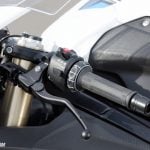
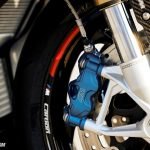
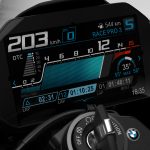
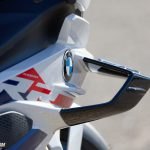

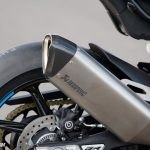
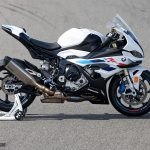
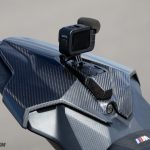
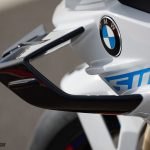
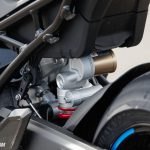
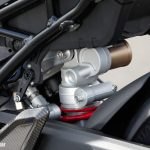
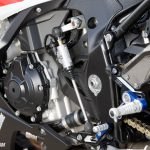
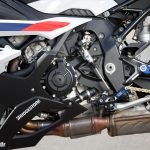
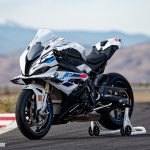
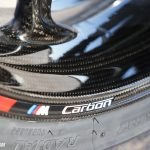
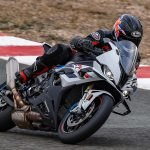

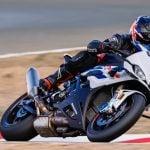
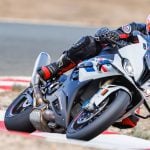
Become a Motorcycle.com insider. Get the latest motorcycle news first by subscribing to our newsletter here.
The post 2023 BMW S1000RR Review – First Ride appeared first on Motorcycle.com.
Copyright
© Motorcycle.com


